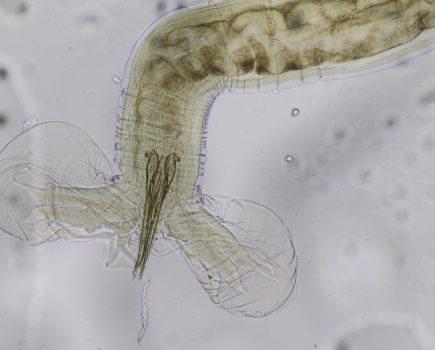Jack Balkham at Westpoint Ashford looks at making the most of winter housing and the animal health and welfare pathway.
It is safe to say that weather conditions have been challenging this year, and autumn has been no different. Kent suffered a notably wet September, with up to 300% of average rainfall recorded. This, in combination with a mild October, has resulted in a lot of ground water, leading to significant poaching and early housing of cattle, and has most definitely made it a struggle for many to finish drilling their winter cereal crops.
It is always important that wherever we are challenged, we seek the opportunity to improve the health and performance of our suckler herd.
Housing is a critical time in the calendar to assess the body condition score of adult cattle. This aids nutritional planning and will influence decisions on the timing of weaning. Thin cows will benefit from earlier weaning, reducing the nutritional demands on them and allowing them to gain condition. Conversely, over-conditioned cows may be weaned later to prevent further weight gain, which is associated with an increased risk of difficult calving and peri-parturient disease.
To assess the efficiency of our systems, housing is also an ideal time to weigh this year’s calves. This allows the farmer to analyse their growth rates from grazing and assess areas to improve for next year.
Daily liveweight gain should be calculated throughout the growing period and areas of suboptimal performance investigated further. This will allow issues to be identified and avoid checks in growth rate next year.
Historically we have used targets of 1kg/day, but we now assess our targets based on different time periods. For the first 15 weeks, we aim for 0.8kg/day. A lot will depend on the breed and systems, but we are all pushing to optimise growth rates to finish fattening earlier. This improves profitability but also reduces emissions, a particularly hot topic of the moment. It is important to discuss these matters with your vet and consultants on a regular basis, and one key opportunity to do this further is to engage with the animal health and welfare pathway (AHWP).
The AHWP is an initiative to encourage farmers and their vets to discuss herd performance, investigate issues and improve farm efficiency and profitability as a team. There are some requirements regarding bovine viral diarrhoea testing to gain access to the funding, which hopefully we are conducting anyway in our herds.
This means that your annual youngstock testing may be subsidised through the AHWP scheme. It should also be noted that the application and claiming processes are reportedly very straightforward. This funding is available on a yearly basis and can be used for a range of investigations on farm. The funds may be used to investigate issues such as trace element deficiency or liver fluke, in accordance with your own farm needs. If you have not already done so, please discuss AHWP opportunities with your own vet.
The opportunities are great in the housing period, as cattle handling becomes much easier. We may perform tasks such as applying ectoparasiticides, performing pregnancy diagnosis on our spring calvers, foot trimming and implementing our vaccination protocols to prevent the development of bovine respiratory disease.
Each farm will have its own bug profile, and so your individual pneumonia vaccination protocols should be bespoke to your unit. It may be most appropriate to instigate an intranasal vaccination programme if speed of onset of immunity is the priority, or it may be advisable to use a vaccine to cover some other pathogens, such as Mycoplasma or Pasteurella.
Where cases of pneumonia arise it is important to record them accurately and discuss with your vet so that we can investigate in a timely manner and implement control measures. This will help reduce further losses in terms of mortality and the cost of treatment and reduced growth rates seen in animals which have suffered disease.
So, make the most of the winter months, focusing on the opportunities presented to improve further the performance of your herd next year. With funding opportunities available via the AHWP, let’s work together to improve performance in the coming 12 months.







